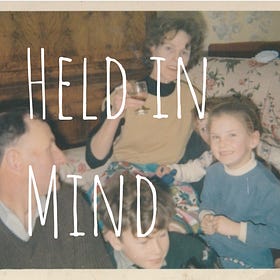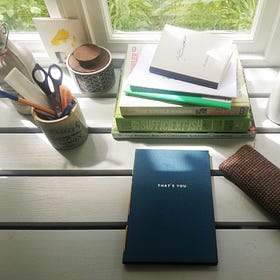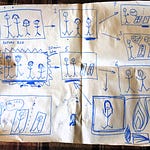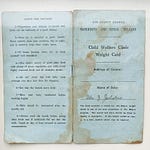If you’re new here (hi!) I’m Lindsay…
On Wednesdays, I share a new audio episode and bonus bits of my memoir, Held in Mind. This book is on submission right now, so that’s why these episodes live behind the paywall. You can listen from the start right here:
Held in Mind: a Memoir
“This is stunning. Memoir is such a fascinating genre isn’t it? And you write it brilliantly.” Clover Stroud – author of four memoirs including the forthcoming The Giant on the Skyline on Held in Mind Held in Mind: A Memoir
On Sundays, I share mostly free personal essays on parenting and post-therapy, perimenopausal midlife. Sometimes they’re video podcast episodes where I chat about caring and creativity with folk at the intersection of the two; sometimes I dig into goings-on in this reading and writing life.
I also run expressive writing courses on Zoom for the Membership, and on that…
Course news…
The next 4-week run of Writing for Better Mental and Physical Health based on the Pennebaker Method launches on Thursday 9th May 2-3pm BST with replays and resources available for folks who aren’t joining us live. Upgrade to the Membership before the 9th May and you’ll get the Zoom link:
And thanks to her trademark generosity, my Members are all invited to join me and
2-3pm BST on Friday 10th May for our live Expert Session on using audio to deepen connection with listeners here on . I’ll be sharing the Zoom link in the Friday Members’ Chat Thread next week and all the info is in this post:And now for this week’s episode’s bonus bits…
13th August 2020
“I’ve been thinking on what it means to be ‘in analysis’, as opposed to simply ‘in therapy’. Is there, in fact, any difference at all? ‘Therapy’ to me had connotations of treatment, healing and getting better while ‘analysis’ I intuit to be a far less cosy process. One of observation, enquiry, questioning. But who is doing the analysing? What might the judgement be, and might I ever be told what it is?
In analysis, am I to be painfully broken up and then remade rather than smoothed over, polished up? Will I find relief in this, and will the act of looking critically at who I am make sense of the past and allow me to live in the present?
In the classroom we used the term ‘analysis’ with abandon, encouraging our pupils to demonstrate a deep understanding of a text. It was a daunting proposition for them, and was painfully achieved by breaking down the text, labelling its parts, looking closely for hidden meaning (often in danger of ascribing it where none had been intended), before eventually arriving at a conclusion, which oftentimes felt mathematical. A ‘solution.’ As critical readers, we’d feel triumph in having cracked it. In all that work, we’d located the essence of what the writer was trying to communicate.
We’d get frustrated when our theories on meaning were challenged. A metaphor that jarred; word choice that evaded understanding; an analogy that failed to chime with the story we had decided to tell about the text. We’d coach our students to sidestep the parts that proved too difficult to categorise, focusing the evaluation on drawing together the complimentary elements; the bits that were simpler to digest and, later, regurgitate in neat paragraphs.
I wonder, as I wait for the static image of the blue chairs I used to sit on to be replaced by her face, if it will be so straightforward to discard or choose to ignore the parts of my story that are harder to categorise; that don’t fit in with the version that’s easier to tell.”
















